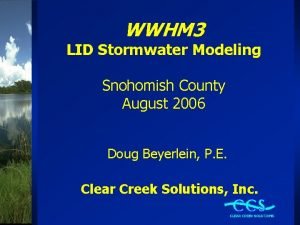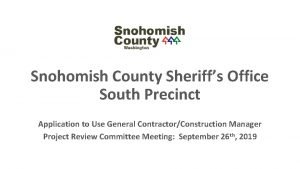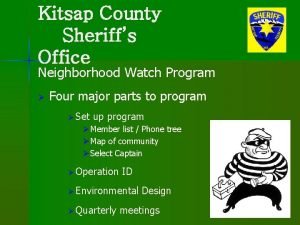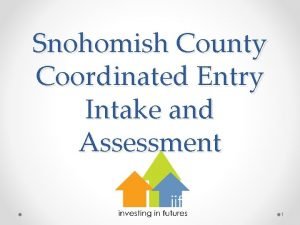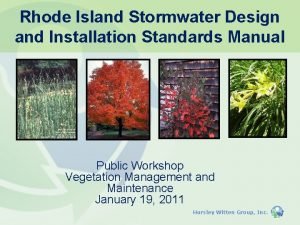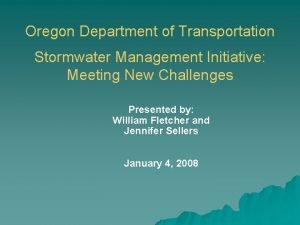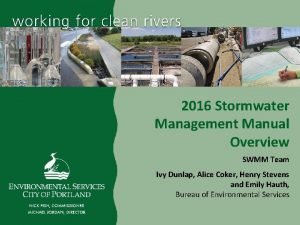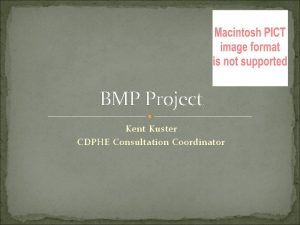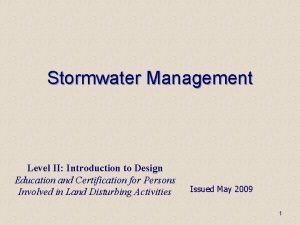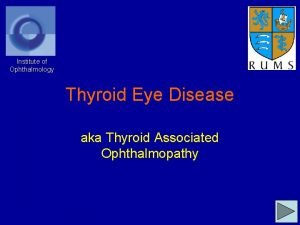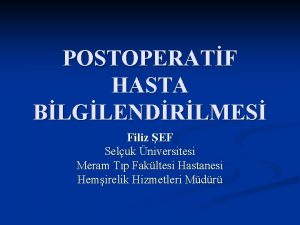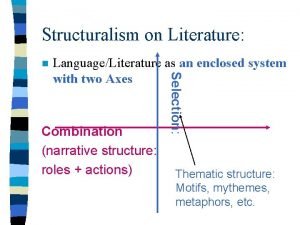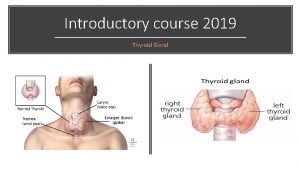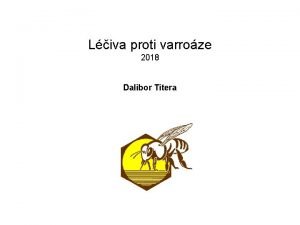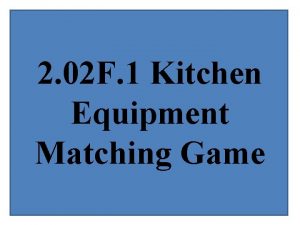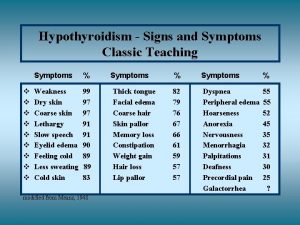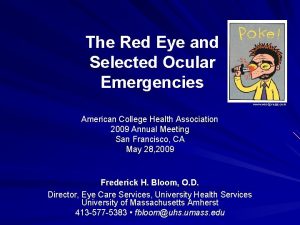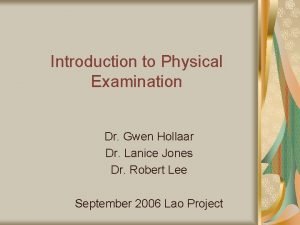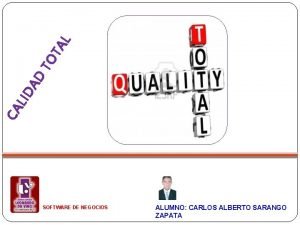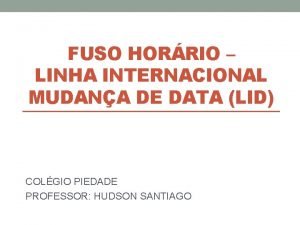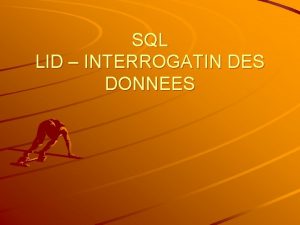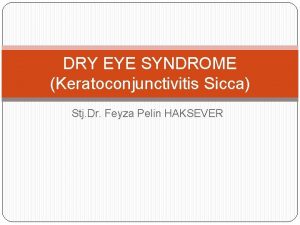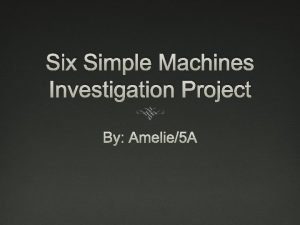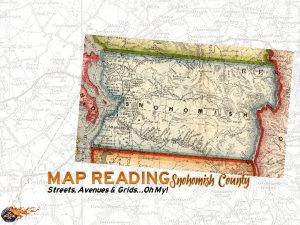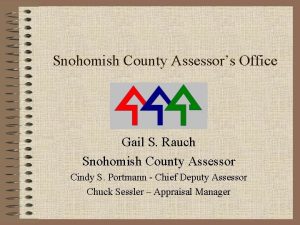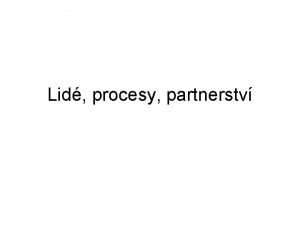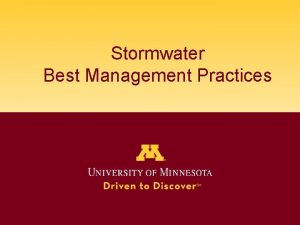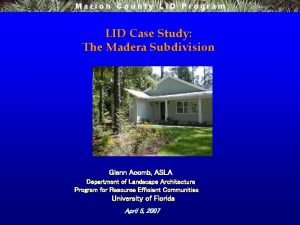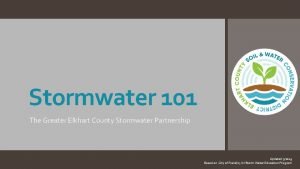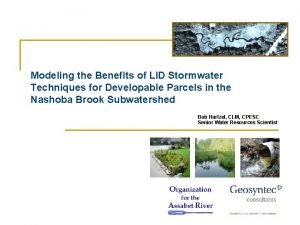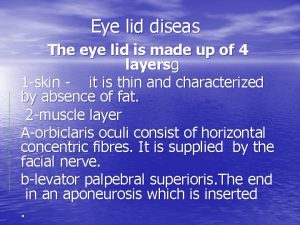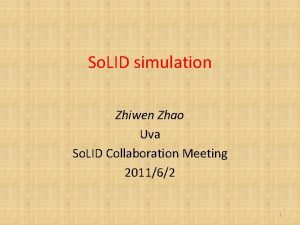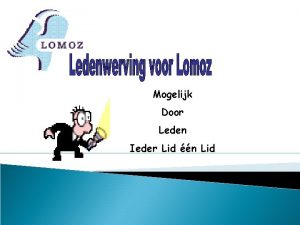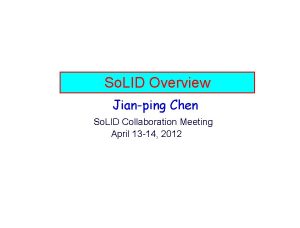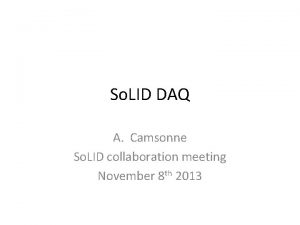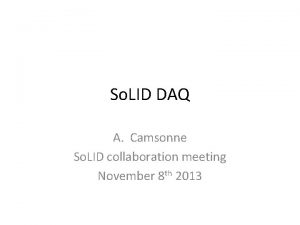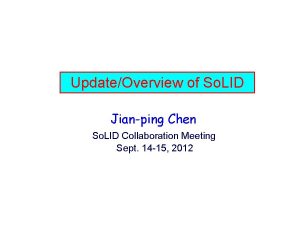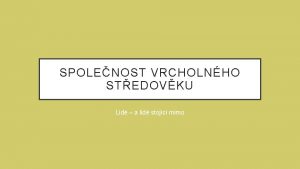WWHM 3 LID Stormwater Modeling Snohomish County August





































- Slides: 37

WWHM 3 LID Stormwater Modeling Snohomish County August 2006 Doug Beyerlein, P. E. Clear Creek Solutions, Inc.

WWHM 3 LID Stormwater Modeling Presented at the August 2006 Snohomish County LID Workshop Everett, WA © 2006 Clear Creek Solutions, Inc. All rights reserved.

Clear Creek Solutions’ Stormwater LID Expertise Clear Creek Solutions, Inc. , provides complete range of hydrologic and stormwater modeling services. • Clear Creek specializes in continuous simulation hydrologic modeling. • We have 30+ years of experience modeling complex hydrologic and stormwater problems. • We created the Western Washington Hydrology Model Version 3 (WWHM 3) for Washington State Department of Ecology. • We teach WWHM and HSPF workshops.

Presentation Introduction What is LID stormwater modeling? How does LID stormwater modeling work? LID stormwater modeling results Questions & Answers

What is LID stormwater modeling? LID stormwater modeling is hydrologic and hydraulic computer modeling of low impact development practices to reduce stormwater runoff. Examples: 1. Dispersion of runoff on pervious surfaces 2. Green/vegetated/eco-roof 3. Rain garden/bioretention/landscape swale

Examples of stormwater LIDs Dispersion of impervious roof runoff on adjacent pervious lawn allowing some water to infiltrate before becoming stormwater runoff.

Examples of stormwater LIDs Green/vegetated/eco-roof Water is stored in the soil prior to runoff.

Examples of stormwater LIDs Rain garden/bioretention/landscape swale Water infiltrates into the soil before runoff.

Western Washington Hydrology Model version 3 (WWHM 3) Available free from the Washington State Department of Ecology web site: http: //www. ecy. wa. gov/programs/wq/stormwater/wwhm_ training/wwhm_v 3/index. html

How does WWHM 3 LID stormwater modeling work? WWHM 3 LID stormwater modeling works by: Explicitly modeling the changes in hydrology due to the LID.

How does WWHM 3 LID stormwater modeling work? WWHM 3 explicitly represents LIDs through S lateral flow basin elements S green/vegetated/eco-roof element S bioretention/rain garden/landscape swale element

How does WWHM 3 LID stormwater modeling work? Explicit representation: Dispersion is represented by an impervious lateral basin element connected to a pervious lateral basin element.

WWHM 3 dispersion by lateral flow Step 1: Lateral impervious basin

WWHM 3 dispersion by lateral flow Step 2: Lateral pervious basin

WWHM 3 dispersion by lateral flow Step 3: Connect impervious basin to pervious.

WWHM 3 dispersion by lateral flow Step 4: Connect impervious surface runoff to pervious.

WWHM 3 dispersion by lateral flow Step 5: Dispersion.

WWHM 3 dispersion by lateral flow Step 6: Add detention pond.

WWHM 3 dispersion by lateral flow Step 7: Size detention pond.

WWHM 3 green/eco-roof modeling Eco-roof modeled: Portland Hamilton Building Data provided by Portland BES

WWHM 3 green/eco-roof Step 1: Green roof element

WWHM 3 green/eco-roof Step 2: Connect to a vault

WWHM 3 green/eco-roof Step 3: Size vault

WWHM 3 bioretention/rain garden modeling Bioretention swales modeled: Seattle 110 th Street Data provided by Seattle Public Utilities

WWHM 3 bioretention/rain garden modeling Weir and vertical orifice outlet Native Soil Amended Soil (1 -3 layers) Underdrain (optional) Native Soil

WWHM 3 bioretention/rain garden Step 1: Basin and bioretention

WWHM 3 bioretention/rain garden Step 2: Add detention pond

WWHM 3 bioretention/rain garden Step 3: Size pond

WWHM 3 LIDs in series Green roof to lateral pervious basin to bioretention swale

WWHM 3 LID modeling results Green roof/eco-roof vs convention roof

WWHM 3 LID modeling results Seattle Roof Flood Frequency Comparison Return Period (years) Reduction 2 24% 5 20% 10 18% 25 16% 50 15% 100 15%

WWHM 3 LID modeling results Seattle Roof Flow Duration Comparison Conventional Runoff Eco-Roof Runoff

WWHM 3 LID modeling results Bioretention/rain garden modeling results:

WWHM 3 LID modeling results Seattle Bioretention Frequency Comparison Return Period (years) Reduction 2 66% 5 63% 10 64% 25 66% 50 67% 100 69%

Summary Stormwater LIDs reduce stormwater runoff and its associated problems. WWHM 3 is a powerful stormwater modeling tool to evaluate the benefits of using stormwater LIDs.

Summary Green/eco-roof and bioretention/rain garden elements are available in WWHM 3 PRO Basic. For more information go to: www. clearcreeksolutions. com

Questions? Contact Doug Beyerlein 425. 892. 6454 beyerlein@clearcreeksolutions. com Joe Brascher 360. 943. 0304 brascher@clearcreeksolutions. com
 Wwhm
Wwhm Snohomish county sheriff south precinct
Snohomish county sheriff south precinct Snohomish county fire district 7
Snohomish county fire district 7 Snohomish county crime watch
Snohomish county crime watch Snohomish county coordinated entry
Snohomish county coordinated entry Dimensional modeling vs relational modeling
Dimensional modeling vs relational modeling Role modeling theory
Role modeling theory Ri stormwater manual
Ri stormwater manual Tceq stormwater construction general permit
Tceq stormwater construction general permit Rhode island stormwater manual
Rhode island stormwater manual Stormwater
Stormwater Waikato stormwater management guideline
Waikato stormwater management guideline Portland stormwater management manual
Portland stormwater management manual Cdphe stormwater
Cdphe stormwater H2o4u
H2o4u Stormwater management
Stormwater management Biocleanse plus
Biocleanse plus Lid lag
Lid lag Lid care solüsyon
Lid care solüsyon Narrative structure examples
Narrative structure examples Flip your lid
Flip your lid Tin lid aussie slang
Tin lid aussie slang Jellinek sign
Jellinek sign Titer rpr
Titer rpr Kitchen matching game
Kitchen matching game Lid lag
Lid lag Trojí lid
Trojí lid Corneal abrasion treatment
Corneal abrasion treatment Lid lag
Lid lag Acromion surface anatomy
Acromion surface anatomy Ad lid
Ad lid Linha internacional da data
Linha internacional da data Jar lid simple machine
Jar lid simple machine Sql lid
Sql lid Feyza pelin haksever
Feyza pelin haksever Lid cover simple machine
Lid cover simple machine Waste container lid
Waste container lid Names of simple machines
Names of simple machines
